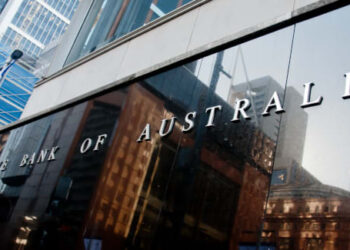Over the years, scale has been promoted as a preventative measure to help weather the constantly changing investment and regulatory conditions.
Currently it is regarded as one of the best tonics for planning businesses that borrowed heavily from their dealer groups during the global financial crisis and are now looking to grow and pay them back.
But the industry’s understanding of scale has changed.
Ten years ago and beyond, scale was about product volumes. It was measured by how many filing cabinets of client files you had in your office. In this business model, the client was attached to an individual, not the firm.
“In the old days, scale was five advisers and if you could take holidays,” Strategic Consulting and Training (SCAT) managing director Jim Stackpool.
Today scale is regarded as a practice management tool rather than an end goal. It has the capacity to completely overhaul business efficiency, to reduce costs and to enable the firm to service a larger numbers of clients.
Scale cannot be underestimated in terms of its capacity to transform a simple business into a better business. It is the enabler that can eliminate key-man risk, help establish replicable processes and systems, and achieve recurring profits built on returning clients.
Redefining scale
Building scale in a business helps reduce costs and achieve a scalable advice model where advice can be provided to more clients at a lower cost.
According to Q Invest general manager Bill Danaher, it is these two elements of scale that make it such a compelling business principle.
It can give a business a competitive advantage, an appealing goal in an ever-changing and growing market such as financial planning.
For Stackpool, scale is about business flow. It is a concept that can be measured based on income levels, client satisfaction and strategic alliances.
“Scale is getting a level of repeat business that is not dependent on the machinations of the market or legislative change,” Stackpool says.
Without demand, a business is unable to reduce its costs. Creating repeatable and reliable business is therefore key to achieving scale.
However, Shirlaws chief executive Andrew McKenzie says while leverage and scale are related, they are different.
“Our view of the world is that there is a difference between scale and leverage. Most firms, in particular financial planning businesses, need to work out how they are going to get leverage and take the emphasis from key-person risk,” McKenzie says.
“Most would have key-person risk. When you look at leveraging, it’s being able to create things that can be duplicated by other people, not just one.”
Certainly a scaled business involves size and this size can be measured in a number of ways.
For this reason, AMP Financial Planning (AMPFP) managing director Michael Guggenheimer says scale is about the size of a business as well as the resources and capital that is appropriate for a business. These resources include infrastructure, such as premises, information technology and the level of technology used to support the core services.
Measuring scale
Measuring scale requires the measurement of turnover, profit and fees per planner.
SCAT’s performance tool, Dashboard, measures scale as being 60 per cent to 75 per cent of business income coming from regular business. This means clients pay dollar X regardless of what their assets are doing.
But Stackpool says client satisfaction can also be an indicator of scale because of its ability to translate into more business.
For example, the net promoter score (NPS), or the calculation of the percentage of clients willing to promote a business versus the detractors, offers a measure of scale.
Stackpool says an NPS of 66 references for every 100 active clients indicates a scaled business. And 100 active clients is as many clients as an adviser can really look after.
Meanwhile, two or three good strategic alliances or centres of influence can mean one to two introductions each month. Therefore, alliances and centres of influence are also measures of scale because of their ability to generate repeat business.
Another measure of scale is the amount of face time with clients. Stackpool says a good amount of face time is 60 per cent a week. If businesses are spending 20 per cent to 30 per cent, this indicates they do not have enough scale to allow them to do this.
Scale can also be measured in non-financial terms. That is, the amount of time-out advisers have from their business.
“A true measure of performance is more discretionary time in the business and in their lives,” Stackpool says.
Benefits of scale
Planning firms of all sizes can benefit from integrating the principles of scale into their business.
“Scale is usually applied to the big end of town. Most boutique firms do not consider scale as anything more than efficiency,” Stackpool says.
This is because integrating scale will help address single-point sensitivity or key-person risk to multi-skill its staff and to monitor efficiency – all healthy aspirations for any business.
“So it’s doing what it should be doing,” Guggenheimer says.
In small boutiques, scale can also help firms increase in value. This is because scale means less dependency on one individual and an increasing ability to replicate successful processes and services.
Scale also creates new business opportunities. “Scale creates diversity or the ability to diversify and this is very powerful when you have changing markets,” McKenzie says.
It also means a more resilient and sustainable business as it gives a business more reasons for people to like it.
“If you’ve been able to create scale, you usually create more loyalty because of the diversity in offering more things,” McKenzie says.
In this way, clients feel close to a business.
However, it can work the other way, as can be the case with banks, where scale can make clients disengaged and feel unloved.
Disadvantages of scale
Pursuing scale for scale’s sake is common.
Danaher says this can happen if practitioners are not cognisant of the need to focus on the client experience, that is, scale takes priority over the client experience.
This can become apparent when a business introduces more services than it can support.
“A mistake you could make is to start to introduce services or products beyond where your brand can reach and you don’t get the take-up,” Danaher says.
“Grow the business at such a rate that the back office cannot keep up with demand, and the client experience begins to suffer.”
According to Stackpool, a danger with scale is too much reinvention. Often practitioners are reinventing the wheel too often and not being optimised and effective.
Another disadvantage of scale is it can actually leave practitioners in a place they don’t want to be. That is, practitioners are forced to be business operators ahead of good technicians and perhaps they enjoy the latter more.
When your focus is on growing your business, the notion of having fewer clients, servicing them better and being more profitable doesn’t seem to make sense. But McKenzie says there is certainly an argument for scaling back.
“There are times when you could look at your client base and think what if I had fewer people, fewer clients and did more for them,” he says.
“It is a very difficult decision to make because most people have an emotional attachment to having more clients.”
On the flipside, if you do decide to grow your business, a failure to think through the impact of servicing more clients to achieve scale can also have its drawbacks.
One of the challenges Q Invest found in providing a wider range of services to its clients was that it needed to sometimes say no to offer some services because they actually were a hindrance to business.
This is because the business ultimately wants to add to its value proposition, which is good client service and meeting the client’s needs, but not making things more cumbersome for its back office.
“We would always evaluate a product and service, but you need to think is there demand for that,” Danaher says.
Scale is not for everyone
Since the industry began, scale has been promoted as a desirable business goal.
But the industry is recognising scale is not for every business. Further, it is an active choice for some businesses not to scale up. More practitioners are realising businesses can still be profitable without scale.
“People think scale means more profit. Just because you get bigger, doesn’t mean you get more profits,” Guggenheimer says.
This is because as a business’s scale grows, it needs to adapt its processes and to continue to re-engineer what it does.
“If you don’t do that, you’ve got a lot of overheads,” Guggenheimer says.
AMPFP has certainly embraced this thinking, actively seeking and working with businesses of all different sizes, providing services based on the needs of particular businesses.
“We have relatively new businesses with experienced planners to businesses which are onto their third generation transitions,” Guggenheimer says.
AMPFP has created a model where it can offer newer businesses the resources they need as well as the more established businesses the level of services they require. It is this flexible model that can adjust to the needs of planning businesses as they move through their life cycle.
For example, in the early years of a business, fixed costs, such as infrastructure and people, are a drain on resources. So for these businesses, AMPFP provides core services, vetting services and marketing.
“For profit to be reinvested in the business, in the first few years it is pretty tough, unless you have got plenty of dollars behind you,” Guggenheimer says.
AMPFP has also established the Financial Planning Centre, bringing together 18-20 financial planning businesses under one roof with all the resources and infrastructure that businesses need to operate, as though they had scale.
This new attitude of not treating all businesses the same and having them aspire to be the same size represents a new direction for the industry.
In this way, scale has become a tool for businesses to work with rather than an end goal.
“Some boutique organisations want to cherry pick what clients they want,” Danaher says.
He says Q Invest is a medium player dealing with bigger clients and it prices its advice accordingly. Ultimately, it is a business that decides on its market and target audience.
But according to McKenzie, every business has a tipping point. That is, the scale that is right for one business is not necessarily right for another. Some are happy to earn a certain amount when they maintain the same size.
“It’s just dependent on the desire of the owners of it. You could stay as a smaller business and make money,” McKenzie says.
One of the greatest challenges in achieving scale is dependency on the principal. If a principal earns $300,000 to $400,000, to afford another planner a business needs to be earning $800,000.
“A good business is making a $200,000 return per person. Some people don’t want to build a business. I get a good return from my business if they stick to the $200,000 return per person,” Stackpool says.
But the decision to not build a scaleable business does not sit well with everyone.
“From a fund manager’s point of view, it is their biggest frustration, the bunch of 50 to 55 year olds who have come out of a bank and move into financial planning and make $250,000 and are taking a month’s holiday,” McKenzie says.
I can do that
Q Invest has actively pursued scale via its limited advice model. Established in 1994, it has unique associations with the public sector and wider community, which give the business a strong base of clients looking to be serviced in a range of different ways.
About seven years ago, Q Invest began providing limited advice over the phone. This enabled the business to provide more advice to more people on a more frequent basis.
“By offering a broader suite of services, it was throwing the net over a wider catchment area,” Danaher says.
In practice, this means the business provides financial advice to about 8000 people a year, with the majority of those people receiving comprehensive advice, that is, advice beyond the limited advice offering.
Advising more people has also meant the business could spread its costs. “The greatest leader of scale is demand. It’s a major lever in reducing costs,” Danaher says.
And according to Guggenheimer, achieving scale marries great service with client numbers.
“To achieve scale, it’s having a prerequisite number of planners providing advice to the clients they serve. You need to attract more clients to provide more advice. As you do this, you need more infrastructure and support,” he says.
Certainly, the profile of a scaled business draws on profitability. Stackpool says to be a scaled business you would want more than 50 per cent of your clients on repeatable income.
“Most do, but it is based on product performance. But they won’t survive a product price war,” he says.
Going hand-in-hand with the ability to generate significant demand, building efficient procedures and processes is a must.
This efficiency goes as far down as the pre-appointment services, which ultimately can make quite a difference in terms of the duration of providing financial advice.
“You have to be open to diversifying your client base. The braver ones are prepared to go down the acquisition route,” McKenzie says.
Commonly, preventing scale are the banks that are currently a lot more reluctant to lend businesses the money required, he says.
Guggenheimer does not agree that firms have to be a certain size to run a better business. With this philosophy in mind, AMPFP can adjust the support provided to a business, dependent on its size.
“These are self-employed businesses. We try and work with them to provide benchmarking data to compare their own performance and results with peer groups,” Guggenheimer says.
“We also encourage scaled practices to have independent methods to give them insights – boards of advice, independent people that come and act in an oversight capacity to a business.” «







